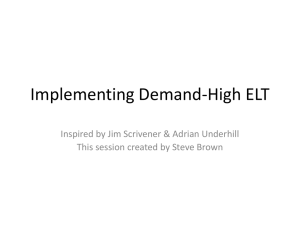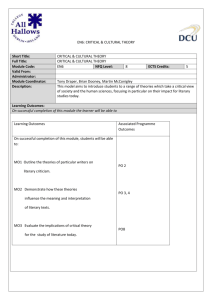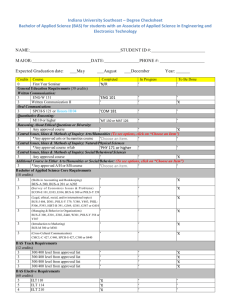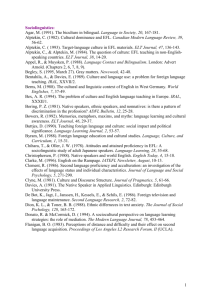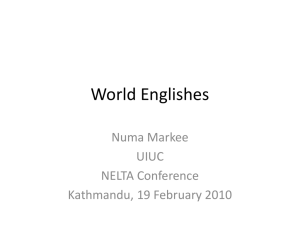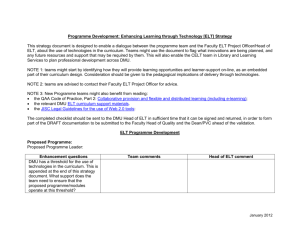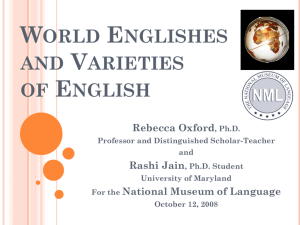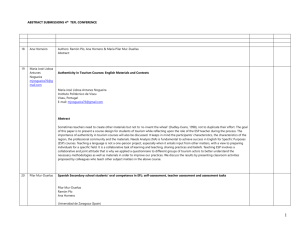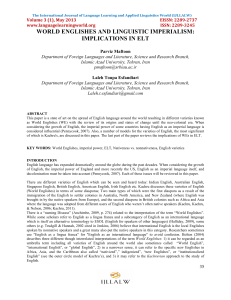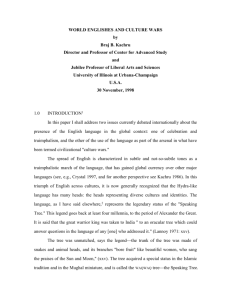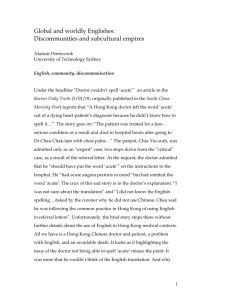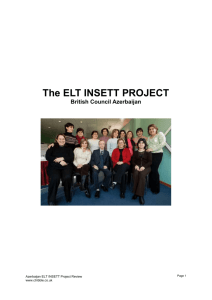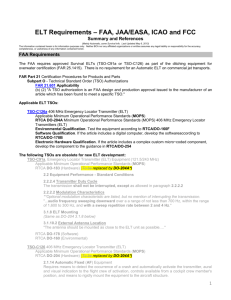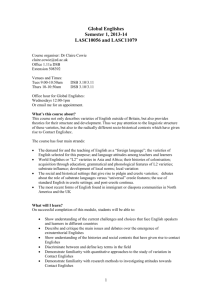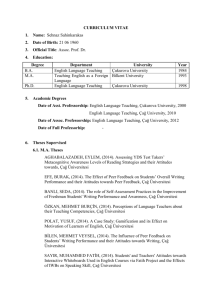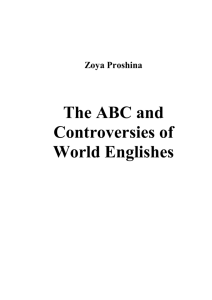LANGUAGE & GLOBALIZATION * UNIT 3: LANGUAGE CHANGE
advertisement
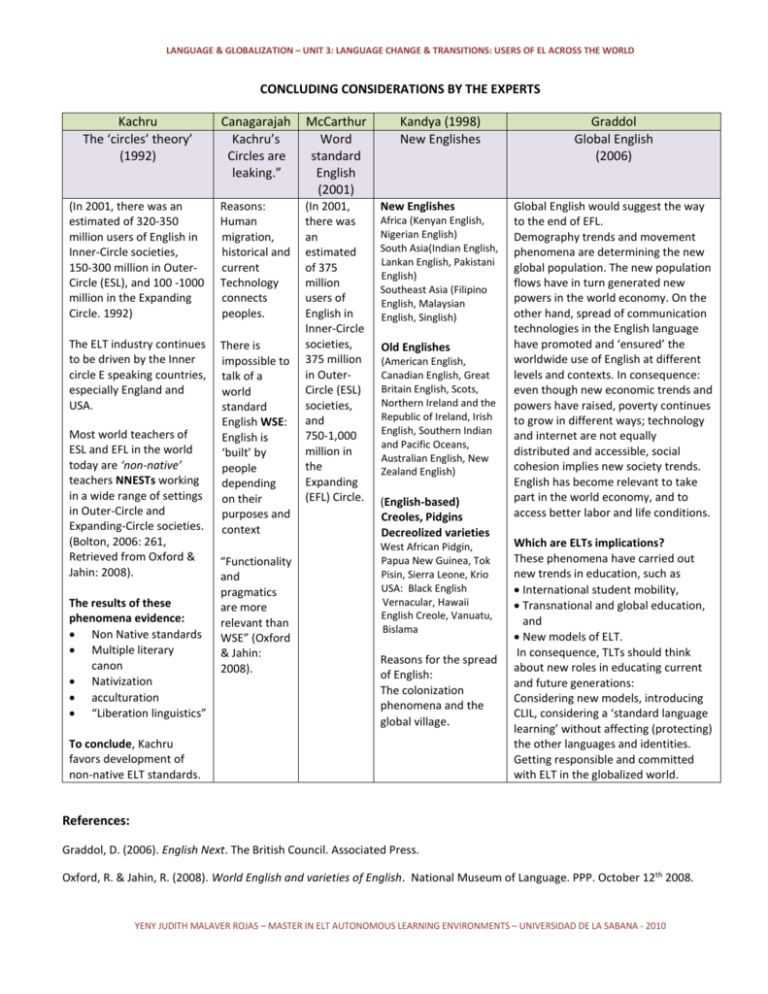
LANGUAGE & GLOBALIZATION – UNIT 3: LANGUAGE CHANGE & TRANSITIONS: USERS OF EL ACROSS THE WORLD CONCLUDING CONSIDERATIONS BY THE EXPERTS Kachru The ‘circles’ theory’ (1992) Canagarajah Kachru’s Circles are leaking.” McCarthur Word standard English (2001) (In 2001, there was an estimated of 320-350 million users of English in Inner-Circle societies, 150-300 million in OuterCircle (ESL), and 100 -1000 million in the Expanding Circle. 1992) Reasons: Human migration, historical and current Technology connects peoples. The ELT industry continues to be driven by the Inner circle E speaking countries, especially England and USA. There is impossible to talk of a world standard English WSE: English is ‘built’ by people depending on their purposes and context (In 2001, there was an estimated of 375 million users of English in Inner-Circle societies, 375 million in OuterCircle (ESL) societies, and 750-1,000 million in the Expanding (EFL) Circle. Most world teachers of ESL and EFL in the world today are ‘non-native’ teachers NNESTs working in a wide range of settings in Outer-Circle and Expanding-Circle societies. (Bolton, 2006: 261, Retrieved from Oxford & Jahin: 2008). The results of these phenomena evidence: Non Native standards Multiple literary canon Nativization acculturation “Liberation linguistics” “Functionality and pragmatics are more relevant than WSE” (Oxford & Jahin: 2008). Kandya (1998) New Englishes New Englishes Africa (Kenyan English, Nigerian English) South Asia(Indian English, Lankan English, Pakistani English) Southeast Asia (Filipino English, Malaysian English, Singlish) Old Englishes (American English, Canadian English, Great Britain English, Scots, Northern Ireland and the Republic of Ireland, Irish English, Southern Indian and Pacific Oceans, Australian English, New Zealand English) (English-based) Creoles, Pidgins Decreolized varieties West African Pidgin, Papua New Guinea, Tok Pisin, Sierra Leone, Krio USA: Black English Vernacular, Hawaii English Creole, Vanuatu, Bislama Reasons for the spread of English: The colonization phenomena and the global village. To conclude, Kachru favors development of non-native ELT standards. Graddol Global English (2006) Global English would suggest the way to the end of EFL. Demography trends and movement phenomena are determining the new global population. The new population flows have in turn generated new powers in the world economy. On the other hand, spread of communication technologies in the English language have promoted and ‘ensured’ the worldwide use of English at different levels and contexts. In consequence: even though new economic trends and powers have raised, poverty continues to grow in different ways; technology and internet are not equally distributed and accessible, social cohesion implies new society trends. English has become relevant to take part in the world economy, and to access better labor and life conditions. Which are ELTs implications? These phenomena have carried out new trends in education, such as International student mobility, Transnational and global education, and New models of ELT. In consequence, TLTs should think about new roles in educating current and future generations: Considering new models, introducing CLIL, considering a ‘standard language learning’ without affecting (protecting) the other languages and identities. Getting responsible and committed with ELT in the globalized world. References: Graddol, D. (2006). English Next. The British Council. Associated Press. Oxford, R. & Jahin, R. (2008). World English and varieties of English. National Museum of Language. PPP. October 12th 2008. YENY JUDITH MALAVER ROJAS – MASTER IN ELT AUTONOMOUS LEARNING ENVIRONMENTS – UNIVERSIDAD DE LA SABANA - 2010



